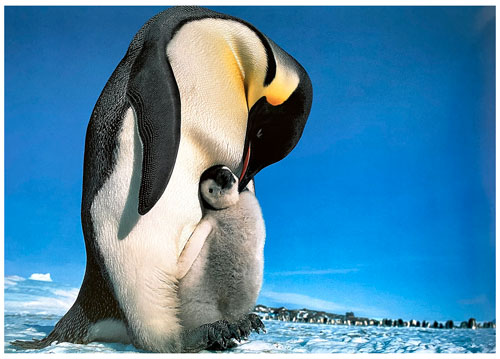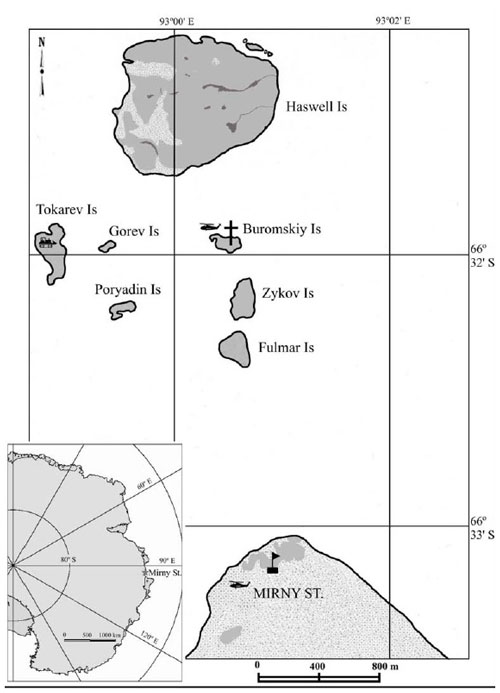In memoriam Bruno Penguin Zehnder, 1945–1997, the famous Antarctic Photographer
Volker Strecke
On the occasion of the 25th anniversary of his death, this article is intended to honor the life and work of Bruno Penguin Zehnder, a world-renowned photographer. Bruno P. Zehnder dedicated his life to penguins. His enthusiasm for Antarctic photography, especially for penguins, was boundless. With his photographs, which have received worldwide recognition, and his great commitment, he made an important contribution to communication about the conservation of the habitat of Antarctic fauna and the protection of the environment in the polar regions of our planet.
Anlässlich seines 25. Todestages soll mit diesem Artikel das Leben und Schaffen von Bruno Penguin Zehnder, einem weltweit bekannten Fotografen, gewürdigt werden. Bruno P. Zehnder widmete sein Leben den Pinguinen. Seine Begeisterung für die Antarktisfotografie, insbesondere für die Pinguine, war grenzenlos. Mit seinen weltweit gewürdigten Fotografien und seinem großen Engagement leistete er einen wichtigen Beitrag zur Kommunikation über den Erhalt des Lebensraumes der antarktischen Fauna und zum Schutz der Umwelt in den polaren Regionen unseres Planeten.
- Article
(23402 KB) - Full-text XML
- BibTeX
- EndNote
Bruno was born in Bad Ragaz, Switzerland, on 8 September 1945. His original name was Bruno Josef Zehnder. He was the youngest of six children. Bruno completed a commercial apprenticeship and started traveling at an early age. He gained experience abroad in Great Britain, France, the Soviet Union, India, and Japan, and during these ventures he became interested in photography.
At the age of 30, he took the opportunity to visit Antarctica for the first time. With the “natives” of the Southern Hemisphere, the penguins, he discovered his passion for the fauna of Antarctica, which became his vocation (Fig. 1).
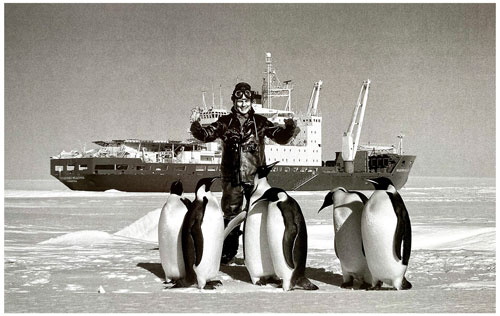
Figure 1Bruno P. Zehnder with his emperor penguins near the Russian research vessel Akademik Fedorov (Zehnder, 2022). Photo: © Guido W. Nic. Zehnder, published with kind permission of Guido W. Nic. Zehnder.
During a total of 22 Antarctic voyages between 1975 and 1997, during which he also wintered several times, Bruno P. Zehnder studied the life of various penguin species in detail. The emperor penguins, which hatch their eggs in the Antarctic winter at temperatures as low as minus 60 ∘C and are thus one of the species that endure the harshest natural conditions on our planet, became his most important object of study. Documenting the life of the penguins in the polar night and the hatching of the chicks in storms and the freezing cold created for him a deep connection with these animals.
Due to his enthusiasm for the penguins, Bruno gave himself the middle name Penguin and called himself Bruno Penguin Zehnder or Bruno P. Zehnder.
Bruno P. Zehnder's fascinating photographs and his commitment to contributing to the protection of the fragile environment and nature of Antarctica with these images brought him international recognition and awards. In 1987, Bruno P. Zehnder was awarded the United Nations Environment Prize (Academic Dictionaries and Encyclopedias, 2003).
The New York Museum of Modern Art acquired two photographs by Bruno P. Zehnder in 1988: Emperor Penguin Adult with Chicks, Cape Washington, Antarctica, 1986; and A River of King Penguins Sitting on Their Eggs on Île de la Possession, Crozet Island Group, Sub Antarctica, 1980. These photos are still on display today and can be viewed online as well (MoMa, 1988).
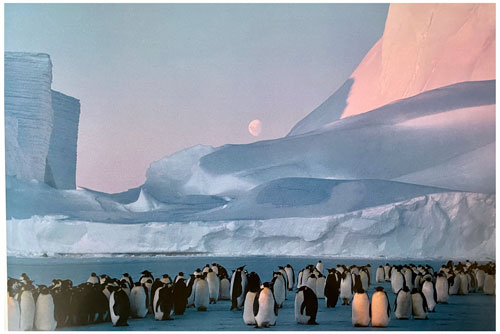
Figure 2Emperor penguins in the cold Antarctic winter (Zehnder, 2022). Photo: © Guido W. Nic. Zehnder, published with kind permission of Guido W. Nic. Zehnder.
The credit card company VISA decorated an issue of its cards in 1988 with a penguin motif by Bruno P. Zehnder. In 1990, he became the BBC Wildlife Photographer of the Year. In the same year, he was elected a fellow of the Royal Geographical Society in London (Granoegger, 2011).
In 1996, Bruno P. Zehnder was awarded the prize for the best magazine picture of the year in the category of science and nature in the USA. He received an official congratulatory letter from the Swiss Federal Council from the then Foreign Minister of Switzerland, Flavio Cotti (Dietschi, 1996).
Bruno made his first trip to Antarctica in 1975 as a steward on the Danish ship Nella Dan, which was on duty for the Australian Antarctic Expeditions for research and logistics (ANARE, 2017). On 20 November 1975, he arrived at the research station on Macquarie Island and was enchanted for the first time by the sight and sound of thousands of king penguins (Javurek, 2002; Zehnder and Hochstrasser, 2006).
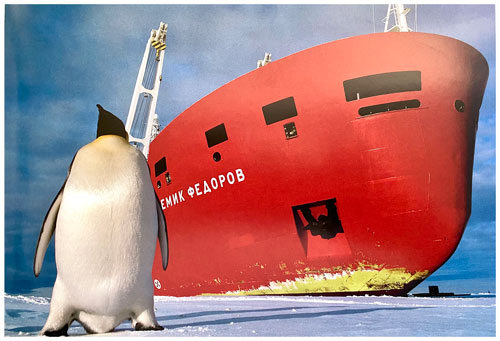
Figure 4Emperor penguin on the sea ice in front of the Russian research vessel Akademik Fedorov (Zehnder, 2022). Photo: © Guido W. Nic. Zehnder, published with kind permission of Guido W. Nic. Zehnder.
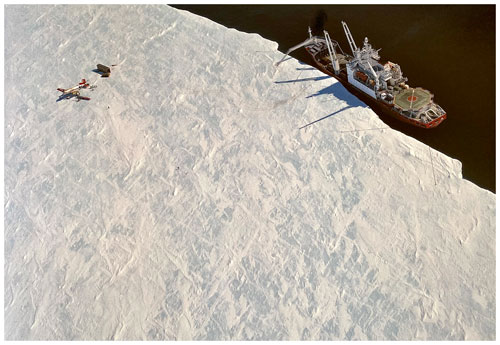
Figure 5Akademik Fedorov during unloading work on the shelf ice edge and assembly of the IL-14 aircraft previously transported in parts (Zehnder, 2022). Photo: © Guido W. Nic. Zehnder, published with kind permission of Guido W. Nic. Zehnder.
Between 1980 and 1997, Bruno made several trips to Antarctica. In 1985, he married the American Heather May in an ice cave near the Argentine Antarctic station Esperanza on the Antarctic Peninsula. Penguins were his wedding witnesses (Granoegger, 2011).

Figure 6Bruno P. Zehnder at the entrance of the Georg Forster Station, 29 December 1988. Private property of Volker Strecke, photos recorded during his first Antarctic expedition, 29 December 1988; during his visit in Salzburg, Austria, 4 August 1996; and during his visit in Bad Ragaz, Switzerland, 1 August 2022.
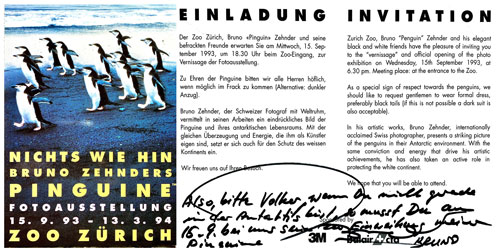
Figure 7Invitation to a photo exhibition in Zurich, 1993. The author, Volker Strecke, was in the Antarctic Station Neumayer II at that time. Private property of Volker Strecke, photos recorded during his first Antarctic expedition, 29 December 1988; during his visit in Salzburg, Austria, 4 August 1996; and during his visit in Bad Ragaz, Switzerland, 1 August 2022.
Bruno P. Zehnder made further voyages – for example, in 1980 with the Swedish cruise ship Lindblad Explorer, in 1986 with the US icebreaker Polar Star as part of the annual Antarctic expedition Operation Deep Freeze, and in 1988 with the Soviet research vessel Akademik Fedorov (AARI, 2022; Lüdecke, 2007, p. 104–106; Fig. 4) – as part of inspection cruises to various Antarctic stations.
Due to close international cooperation under the Antarctic Treaty, Bruno was appointed by the Soviet State Committee for Hydrometeorology in 1988 as a participant in the 34th Soviet Antarctic Expedition and was given the task of photographically documenting various Antarctic research stations visited (Schneider and Hochstrasser, 2002).
At the end of December 1988, the Akademik Fedorov was at the ice shelf near the Soviet Antarctic station Druzhnaya 3 for loading and unloading work (Fig. 5). Together with other Soviet expedition members, Bruno flew from there in a robust transport aircraft of the type Ilyushin 14 (IL-14, 2022) to the Novo ice airfield south of the Schirmacher Oasis, where the research bases Novolazarevskaya, Maitri, and the former GDR station Georg Forster were located.
The author of this article, Volker Strecke, had the opportunity to meet Bruno Penguin Zehnder himself on 29 December 1988 and to do a tour with him around the Georg Forster Station. Bruno told of his involvement with the United Nations, his activity in the Soviet Antarctic expedition, and his enthusiasm for polar photography, especially of penguins (Fig. 6).
In the years after his visit to the Schirmacher Oasis, Bruno remained in correspondence with the author (Fig. 7).
In the following years, Bruno P. Zehnder traveled several times together with the Soviet Antarctic Expedition and wintered at Mirny Station to document the life of emperor penguins under all weather conditions over the entire period of a year. Bruno's main observing site was a big emperor penguin colony near Zykov Island, north of Mirny. As of 1994, Zehnder used his own stamp for his expeditions (Fig. 8).

Figure 8Personal cachet stamp of Bruno P. Zehnder, 1994. Private property of Volker Strecke, photos recorded during his first Antarctic expedition, 29 December 1988; during his visit in Salzburg, Austria, 4 August 1996; and during his visit in Bad Ragaz, Switzerland, 1 August 2022.
During a visit to Salzburg, Austria, on 4 August 1996, the author had a second meeting with Bruno P. Zehnder. He handed over some press clippings about his exhibitions of penguin pictures (Rosenkranz, 1989; Yeld, 1994; Dietschi, 1996; Huijser, 1996) and told about his previous and future Antarctic activities. In the following year, he wanted to study again, intensively, the breeding behavior of the emperor penguins at Mirny and to record it photographically.
In 1997, Bruno undertook his last Antarctic expedition, which again took him to Mirny. On 7 July 1997, Bruno left the station and walked over the frozen sea ice to the emperor penguin colony at Zykov Island at the coordinates 66∘32′ S 93∘01′ E to take pictures of the penguins balancing their eggs on their feet or to see some of the first chicks hatch out of their eggs (Fig. 9).
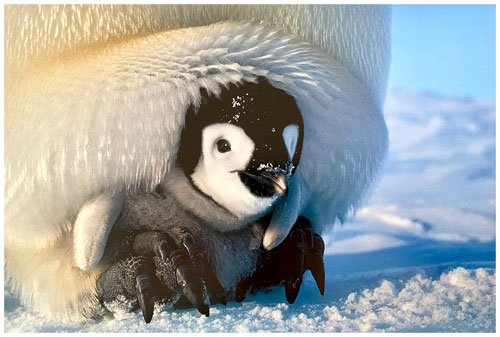
Figure 9Young emperor penguin chick under the brood crease (Zehnder, 2022). Photo: © Guido W. Nic. Zehnder, published with kind permission of Guido W. Nic. Zehnder.
Due to the great diversity of bird fauna and the intensive breeding activities, the area around the islands Haswell, Buromsky, Zykov, and Fulmar is a special protection area under the Antarctic Treaty (ATS, 2011, 2022a, b, c, d; SCAR, 2022; Fig. 10).
In the evening of 7 July 1997, Bruno received a warning by radio from Mirny station that a snowstorm was coming and that he should return to the station immediately. On the way back, he was overwhelmed by the strength of the snow storm. Antarctic blizzards are notorious. With wind speeds of up to 50 m per second and more, you can no longer keep on your feet; the flying ice crystals sting like needles in your face, and visibility is reduced to the point of complete disorientation. When the sun is shining, this is the dreaded white out, and when it is dark in the polar night, this danger is even higher.
Bruno radioed a few more times, but due to sinking temperatures, the battery capacity of his handheld radio was getting low, and finally no contact was made any more. During an immediately initiated search, Bruno was unfortunately not found in the storm. Unfortunately, Bruno missed the station, stumbled into a dark void, stayed down, and died of hypothermia. It was not until 2 d later, on 10 July 1997, that the frozen body of Bruno P. Zehnder was found.
In August 1997, Bruno was solemnly buried on Buromsky Island (Fig. 11). The island was named after hydrographer Nikolai Ivanovich Buromsky, who died during unloading operations of the Soviet expedition ship Lena on 3 February 1957. It is a tradition of Soviet and Russian Antarctic expeditions that expedition members who died during their stay at Mirny find their final resting place on Buromsky Island, which is located not far from Mirny at the coordinates 66∘32′04′′ S 93∘00′ E. This cemetery belongs to the Historic Sites and Monuments protected by the Antarctic Treaty (ATS, 2022a, b, c, d).
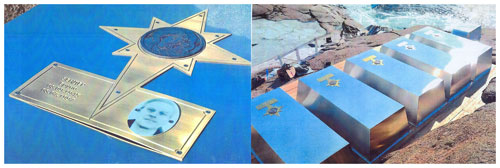
Figure 11The casket of Bruno Penguin Zehnder after the restoration of the graves on Buromsky Island in 2017 (Stefanova, 2020). © Olga Stefanova 2020, photo published with kind permission of Olga Stefanova.
Inscription on the plaque on his grave
(Zehnder)
(Bruno)
08.09.1945
08.07.1997
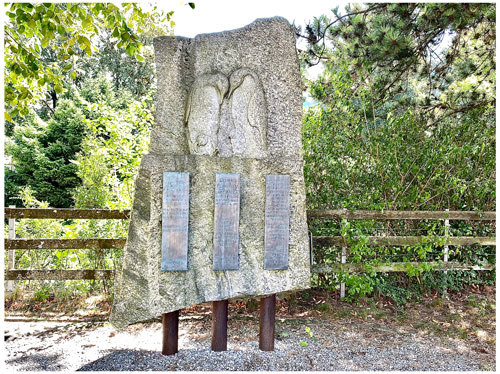
Figure 12The memorial stone for Bruno P. Zehnder in Bad Ragaz, Switzerland, 1 August 2022. Private property of Volker Strecke, photos recorded during his first Antarctic expedition, 29 December 1988; during his visit in Salzburg, Austria, 4 August 1996; and during his visit in Bad Ragaz, Switzerland, 1 August 2022.
For his extraordinary photographic achievements, Bruno P. Zehnder was posthumously awarded the Prize for Excellence by the United Nations Society of Writers and Artists on 8 September 1997 (Schneider and Hochstrasser, 2002).
The Swiss television journalist Urs Schnell made a documentary entitled The Penguin Man – Passion and Death in the Ice, which was shown on Swiss television station SRF on 8 March 2001 (Schnell, 2001a, b).
Initiated by the two artists Charlotte Schneider and Charly Hochstrasser, the exhibition project Unter Pinguinen was launched on 22 February 2002. This became a traveling exhibition that was presented in various cities in Switzerland until 2011 (Schneider and Hochstrasser, 2002).
On 30 August 2003, a memorial stone was inaugurated in the center of Bruno P. Zehnder's hometown, Bad Ragaz, Switzerland. It is a 6 t migmatite boulder that comes from Buromsky Island. After a long approval process, it was made possible for this boulder to be transported by the Russian expedition ship Akademik Fedorov from Antarctica to Europe and finally to Bad Ragaz (Fig. 12). The sculptor, Sepp Azzola, chiseled two emperor penguins with their chicks out of the stone. Inscriptions of three personal friends of Bruno P. Zehnder are immortalized on bronze plates (Schneider and Hochstrasser, 2002).
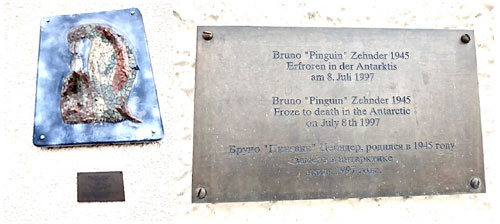
Figure 13Emperor penguin and commemorative plaque at the former home of Bruno P. Zehnder in Bad Ragaz, Switzerland (private photos, Viktor Hojas, Bad Ragaz; © Viktor Hojas, 8 August 2022, published with kind permission of Viktor Hojas).
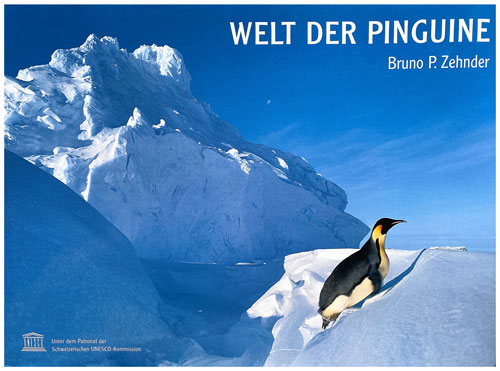
Figure 14Still today, this attractive illustrated book World of Penguins can be ordered online (Zehnder and Hochstrasser, 2006). © Guido W. Nic. Zehnder.
Inscriptions on the memorial stone
Left plate.
Er suchte das Leben in der Welt des Todes,
die Wärme des Mondes über dem Eis,
den zarten Ruf des Pinguinkindes im aufbrechenden Ei.
Schöpfung war seine Botschaft.
Hanspeter Gschwend, Radio DRS.
Translation into English:
He sought life in the world of death,
the warmth of the moon over the ice,
the gentle call of the penguin child in the breaking egg.
Creation was his message.
Hanspeter Gschwend, Radio DRS.
Middle plate.
Bruno Penguin Zehnder.
Born Bad Ragaz 1945.
Died near Mirny, Antarctica 1997.
From his grieving Antarctic friends,
both human and feathered, who miss him sorely.
Malcom W. Browne, Science Writer, The New York Times.
Right Plate.
Translation into English:
He stayed there forever between the snow and the gray rocks
where amazing birds were, of which he dreamed,
where the ice with its cold beauty froze the land forever…
There he found his peace, he could not accept anything else in life.
Victor Pomelov, Ecologist, Russian Antarctic Expedition.
A bronze plate from the sculptor Sepp Azzola was mounted at the right outer edge of the memorial stone for Bruno P. Zehnder in Bad Ragaz, Switzerland, with the following inscription:
Dieser Gedenkstein, ein Migmatit, stammt vom Felsen Brunos Grabes in der Antarktis.
Azzola, Bildhauer, 2003.
Translation into English:
This memorial stone, a migmatite, comes from the rock of Bruno's grave in Antarctica.
Azzola, Sculptor, 2003.
A mosaic portrait, made by Albert Zehnder, of an emperor penguin with its chick and a commemorative plaque (Fig. 13) are attached to the former home of Bruno P. Zehnder in Bad Ragaz, Switzerland.
The idea of a film biography about Bruno P. Zehnder, starring the American actor Richard Gere, was abandoned in 2005. The reason was the difficult weather conditions and high costs expected for filming in Antarctica (Nistelrooy, 2005).
Under the leadership of Charly Hochstrasser, director of the project Unter Pinguinen (Schneider and Hochstrasser, 2002), and with the support of Guido W. Nic. Zehnder, the brother of Bruno P. Zehnder; Hanspeter Gschwend, author and editor at Radio DRS, Switzerland; and David G. Senn, professor of zoology at the University of Basel, a fascinating book entitled World of Penguins was produced in 2006 (Fig. 14).
“I want my images to bear witness to this beautiful, terrible land and its inhabitants, the penguins” (Zehnder and Hochstrasser, 2006, p. 1). With this quote from Bruno P. Zehnder, the book World of Penguins begins. It is a fascinating work in which all penguin species in the various habitats of the Southern Hemisphere are explained in detail and illustrated with numerous large-format photographs by Bruno P. Zehnder (Zehnder and Hochstrasser, 2006).
In 2006, the Swiss UNESCO Commission took over the patronage of this book project. This was in recognition of both the artistic work and the extensive commitment of Bruno P. Zehnder to the protection of Antarctica (Zehnder and Hochstrasser, 2006, p. 192).
With his photos, Bruno Penguin Zehnder brought people closer to the beauty and sensitivity of the southern ice world. His will and commitment affirmed the high relevance of preserving the ecosystem of the Antarctic continent. Perhaps it was even his last will that he be laid to rest in the Antarctic, near his beloved emperor penguins. On the one hand, Antarctica and the Arctic are directly affected by the current climate change, and on the other hand, both polar regions influence the global climatic events of our planet. Bruno P. Zehnder's work actively supported activities to protect the nature of Antarctica and the goals of the Antarctic Treaty, which reserves this fascinating continent and its surroundings for peaceful research activities only.
All information used is publicly available (see the references).
The author has declared that there are no competing interests.
Publisher's note: Copernicus Publications remains neutral with regard to jurisdictional claims in published maps and institutional affiliations.
This paper was edited by Cornelia Lüdecke and reviewed by Diedrich Fritzsche.
AARI: Arctic and Antarctic Research Institute, St. Petersburg, Russia, Expedition Ship Akademik Fedorov, https://www.aari.ru/fleet/nes-%C2%ABakademik-fyodorov%C2%BB (last access: 30 December 2022), 2022.
Academic Dictionaries and Encyclopedias: The United Nations Environment Programme (UNEP) – Global 500 Roll of Honour, Awardees by year, 1987, https://en-academic.com/dic.nsf/enwiki/1245231 (last access: 30 December 2022), 2003.
ANARE: Australian National Antarctic Research Expedition, MV Nella Dan, 1962–1987, https://www.antarctica.gov.au/about-antarctica/history/transportation/shipping/lauritzen/nella-dan-1962-1987/ (last access: 30 December 2022), 2017.
ATS: Antarctic Treaty Historical Sites and Monuments, Buromsky Isl. HSM9, https://www.ats.aq/devph/en/apa-database/90 (last access: 30 December 2022), 2022a.
ATS: Antarctic Treaty Historical Sites and Monuments, Buromsky Isl. HSM9, https://www.ats.aq/devph/en/news/219, (last access: 30 December 2022), 2022b.
ATS: Antarctic Treaty Historical Sites and Monuments, Buromsky Isl. HSM9, https://ats.aq/devphBackEnd/api/export/hsm?lang=e, (last access: 30 December 2022), 2022c.
ATS: Antarctic Treaty Historical Sites and Monuments, Buromsky Isl. HSM9, https://antarctictreaty.maps.arcgis.com/apps/webappviewer/index.html?id=9dbf95325c394e149bc5b6bdb7e64e1f, (last access: 30 December 2022), 2022d.
Dietschi, I.: Im Kaiserreich – Bruno Zehnders Pinguinbilder, Das Magazin, Bern, Switzerland, 23, 52–62, 8–14 June 1996.
Granoegger, M.: Emperor Zehnder – A Penguin a day keeps the doctor away, Blog, http://a-penguin-a-day.blogspot.com/2011/03/emperor-zehnder.html (last access: 30 December 2022), 2011.
Huijser, D.: Verliebt in Pinguine, Anzeiger Nr. 31, St. Gallen, Switzerland, 30 July 1996.
IL-14: Akademic, Iljuschin Il-14, https://de-academic.com/dic.nsf/dewiki/649376, last access: 30 December 2022.
Javurek, B.: P wie Pinguin – Bruno P. Zehnder, weltberühmter Pinguin-Fotograf, bezahlte seine Leidenschaft für die Tiere mit dem Leben, SWI Swiss Info, https://www.swissinfo.ch/ger/p-wie-pinguin/2938292 (last access: 30 December 2022), 20 September 2002.
Lüdecke, C.: Steps of Foundation of Institutionalized Antarctic Research, Proceedings of the 1st SCAR Workshop on the History of Antarctic Research, Bavarian Academy of Sciences and Humanities, Munich (Germany), 2–3 June 2005, Berichte zur Polar- und Meeresforschung, Reports on Polar and Marine Research, 104–106, https://epic.awi.de/27231/1/Lde2007b.pdf (last access: 30 December 2022), 2007.
MoMa: Bruno Zehnder, Swiss, 1945–1997, The Museum of Modern Art, New York, USA, https://www.moma.org/artists/6553 (last access: 30 December 2022), 1988.
Nistelrooy, V.: Richard Gere über kommende Projekte, https://web.archive.org/web/20131016084226/http://www.filmmag.de/news/1862-Richard-Gere-ueber-kommende-Projekte (last access: 30 December 2022), 30 October 2005.
Rosenkranz, S.: Kalter Krieg im Eis, Stern Nr. 50, 52–75, Hamburg, Germany, 7 December 1989.
SCAR: Antarctic Digital Database Map, https://www.add.scar.org/, last access: 30 December 2022.
Schneider, C. and Hochstrasser, C.: Projekt Unter Pinguinen, https://www.unterpinguinen.com/ (last access: 30 December 2022), 2002.
Schnell, U.: The Penguin Man, TV-Documentation, Swiss Television DRS, https://www.doklab.com/production/der-pinguin-mann (last access: 30 December 2022), 2001a.
Schnell, U.: The Penguin Man, TV-Documentation, Swiss Television DRS, Mediathek, https://www.srf.ch/play/tv/dok/video/der-pinguin-mann-leidenschaft-und-tod-im-eis?urn=urn:srf:video:a898ccf9-220c-4077-8e2e-29f8ff983b91 (last access: 30 December 2022), 2001b.
Stefanova, O.: Buromskiy Island - Warming the Heart of Antarctica, Documentary, Russia, https://www.imdb.com/title/tt12375026/ (last access: 30 December 2022), 2020.
Yeld, J.: Antarctic penguins are “prisoners” of Zehnder, The Argus, Cape Town, South Africa, 8 March 1994.
Zehnder, G. W. N.: Private Photo Archive with photos from Bruno P. Zehnder, 1975–1997, 2022.
Zehnder, B. P. and Hochstrasser, C.: Welt der Pinguine, Eidenbenz Kalenderverlag, St. Gallen, Schweiz, ISBN 10 3-033-00915-8, https://www.unterpinguinen.com/d/shop_buch.shtml (last access: 30 December 2022), 2006.






